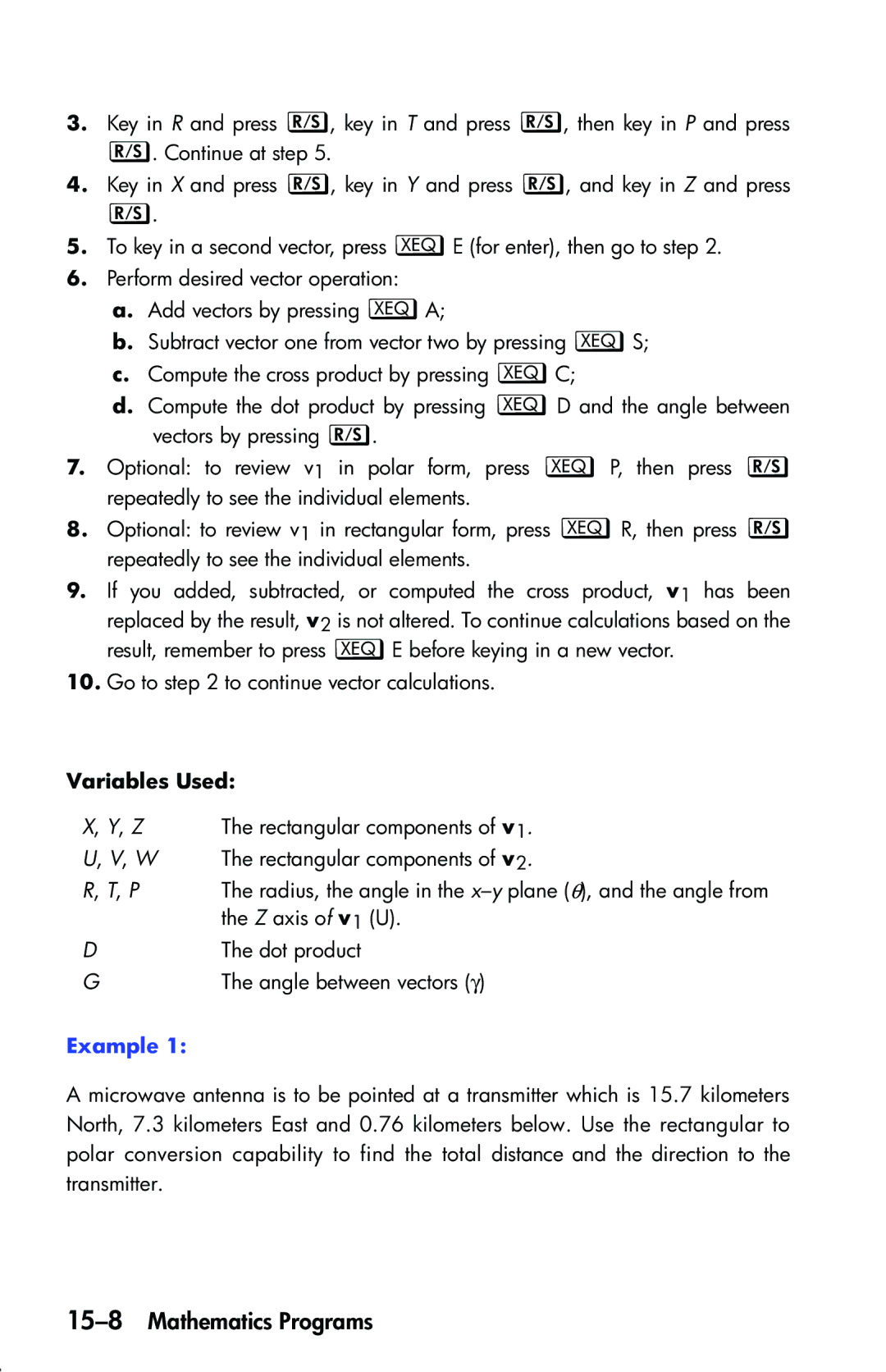3.Key in R and press g, key in T and press g, then key in P and press g. Continue at step 5.
4.Key in X and press g, key in Y and press g, and key in Z and press
g.
5.To key in a second vector, press XE (for enter), then go to step 2.
6.Perform desired vector operation:
a.Add vectors by pressing XA;
b.Subtract vector one from vector two by pressing XS;
c.Compute the cross product by pressing XC;
d.Compute the dot product by pressing XD and the angle between vectors by pressing g.
7.Optional: to review v1 in polar form, press X P, then press g repeatedly to see the individual elements.
8.Optional: to review v1 in rectangular form, press XR, then press g repeatedly to see the individual elements.
9.If you added, subtracted, or computed the cross product, v1 has been replaced by the result, v2 is not altered. To continue calculations based on the result, remember to press XE before keying in a new vector.
10.Go to step 2 to continue vector calculations.
Variables Used:
X, Y, Z | The rectangular components of v1. |
U, V, W | The rectangular components of v2. |
R, T, P | The radius, the angle in the |
| the Z axis of v1 (U). |
D | The dot product |
G | The angle between vectors (γ) |
Example 1:
A microwave antenna is to be pointed at a transmitter which is 15.7 kilometers North, 7.3 kilometers East and 0.76 kilometers below. Use the rectangular to polar conversion capability to find the total distance and the direction to the transmitter.
